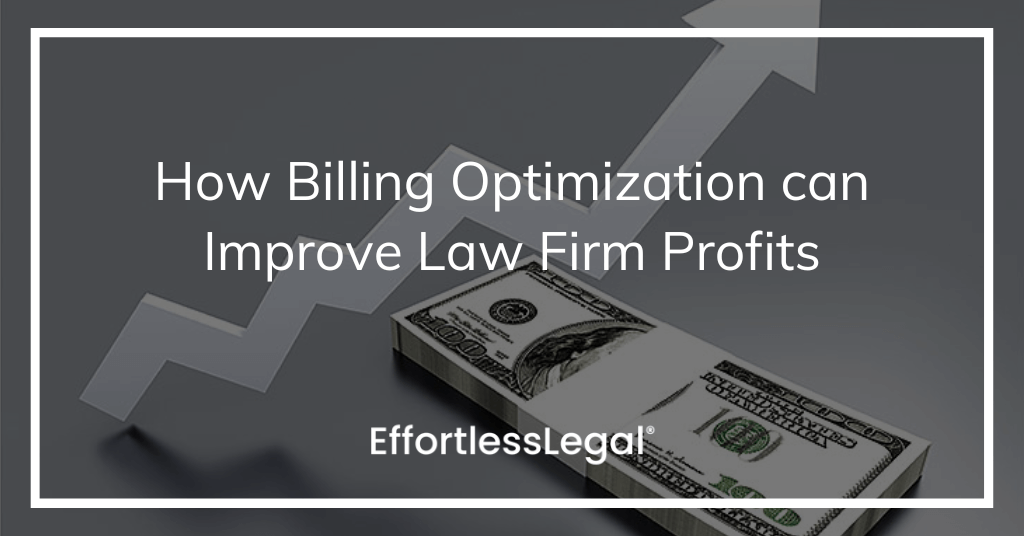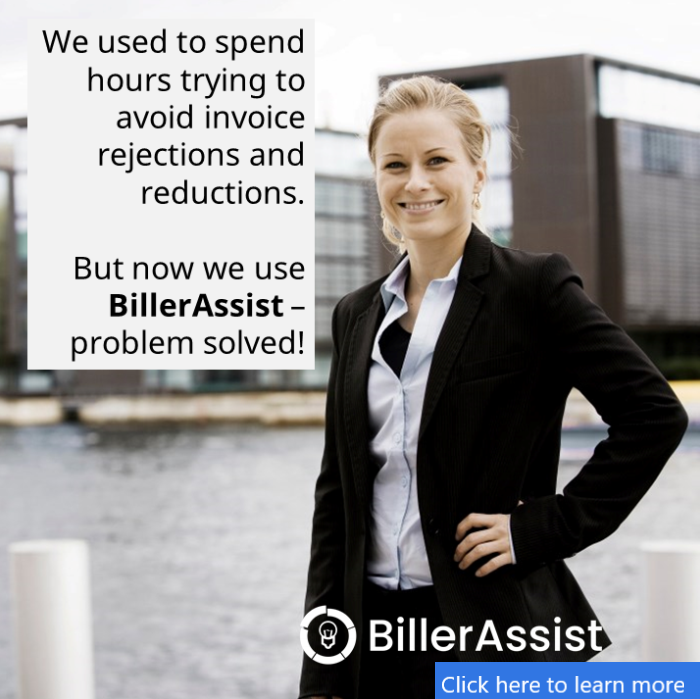How Billing Optimization Can Improve Law Firm Profits
Digital billing and practice management systems are now common in law firms.
With the many options for online billing available, especially with legal billing platforms that allow third party applications to build on their basic functionality, leaps and bounds in technology have made billing simpler and more accurate.
Improvements in machine learning and artificial intelligence enable billing and practice management systems to be personalized according to each law firm’s preferences. With these improvements, computer assisted billing applications can drastically increase law firm profits.
Fixing Bottlenecks in Legal Billing
Identifying and improving any business’s shortcomings is perhaps the most important aspect of business management. For law firms, inadvertent errors and inconsistencies can become especially problematic when it comes to billing. The billing process is one which must be done consistently and flawlessly if a law firm wants to earn as much as possible for its work.
The more quickly and accurately invoices can be submitted, the sooner the law firm can be compensated. Stated differently, better billing practices reap more bountiful profits. The Un-Billable Hour identifies a way of verifying whether adjustments in a law firm’s billing process are actually improvements.
First, the amount of time it takes to draft a bill is weighed against the amount of time it takes for a bill to be paid. If Days Sales Outstanding (DSO), or the average number of days it takes for payment to be remitted after work is performed or expenses advanced, decreases after billing practice adjustments are put in place, then the effectiveness of the method is proven.
Attorneys can use this formula to calculate their firm’s DSO:
(Accounts Receivable / Total Revenue) x Number of Days
One proven way to improve billing efficiency is the use of machine learning and automation to perform manual tasks more quickly and accurately. Such computer assisted billing applications provide better billing in every important aspect: speed, clarity, and accuracy.
Reviewing and Submitting Bills
Every lawyer and legal assistant worth their salt knows that billing clients for legal services and expenses can be a long and tedious process. To the dismay of these same people, time spent billing cannot be added to the bill. Time that otherwise could be spent on billable tasks – or even on non-work activities — is ‘lost’ to what is essentially free work.
In addition, The Un-Billable Hour, a law practice and advisory podcast, notes that errors in the un-billable process of generating and submitting invoices will lose law firms money. The podcasts say that “disorganization, slow response to clients, late billing invoices, and not tracking time” are the typical reasons that lead to reduced efficiency and decreases in revenue.
Many law firm billing software systems expedite the time-entry process in billing, but they usually do not address the bill review task – i.e., the process of cleaning up time and expense entries before invoices are sent to clients. Attorneys must exercise “billing judgment," and “make a good-faith effort" to exclude charges and expenses “that are excessive, redundant, or otherwise unnecessary." Indeed, the ABA Model Rules for attorney ethics require lawyers ensure their bills are reasonable.
Moreover, many time tracking and law firm billing software are not able to help law firm’s ensure their invoices are compliant with client billing rule requirements, which in turn requires more time spent cleaning up billing entries prior to submission.
However, computer assisted billing programs, using artificial intelligence and machine learning, are able to solve this problem.
These applications can use a law firm’s own billing data to give real-time updates to timekeepers to confirm that their entries are compliant. Additionally, these applications also often flag billing anomalies that don’t meet the clients’ billing rules, notifying timekeepers of the potential problems concurrently with work being done.
Moreover, the technology available in many of these applications is able to highlight potential issues to the user, before a law firm’s invoices are even generated.
Armed with this useful information, each timekeeper can more efficiently refocus their efforts to meet the standard of their clients, and even avoid doing work which is unbillable.
Automated UTBMS/LEDES Coding
Approximately twenty years ago, the Legal Electronic Data Exchange Standard Oversight Committee (LOC), created a system for “billing standardization” that would more effectively categorize legal billing tasks and expenses. The LOC also introduced a method which translates them into invoices. In the present day, the UTMBS or “LEDES” codes are more or else the industry standard among clients.
Since their implementation, the LOC’s task-based codes have made law firm invoices more transparent to their clients and simplified billing analysis. At least in theory, this leads to faster payment for the law firm’s work.
A potential drawback for the actual application of these codes is that lawyers or their billing personnel must search for and choose from a large menu of options for the correct code for each entry. This manual process often leads to human error and idiosyncrasies of code choices.
Human error and idiosyncrasies, along with the extra time necessary to complete this manual process, have the potential to create problems nearly every step of the way. Clients may reject invoices due to incorrect coding, which in turn takes even more time and effort to correct those errors and to resubmit the bill.
Fortunately for law firms, computer-assisted billing applications can also alleviate these areas of concern.
These applications can assign the proper codes to the tasks or expenses with accuracy and do so automatically. Lawyers or billing professionals will not be required to take the time to look up these codes, or have to fix rejected invoices.
In fact, computer assisted law firm billing applications apply these billing codes independently and immediately, without any human idiosyncrasies, delays, or inadvertent errors.
Conclusion
Just as it is in every other field of business, technology is altering the legal landscape. The advanced tools of automation and machine learning that are available today will be the industry standards of tomorrow. Automated billing not only is a vast improvement over manual billing but it also has great potential for even further progress.
The benefits speak for themselves. Attorneys will have more time to devote completing billable work. Law firms and their clients can deal with rejected bills less frequently. Moreover, law firms can plan new ways to improve their business model based on the analyses of their billing data. This all works to drive realization and collection rates, which will lead to a more profitable law firm.




